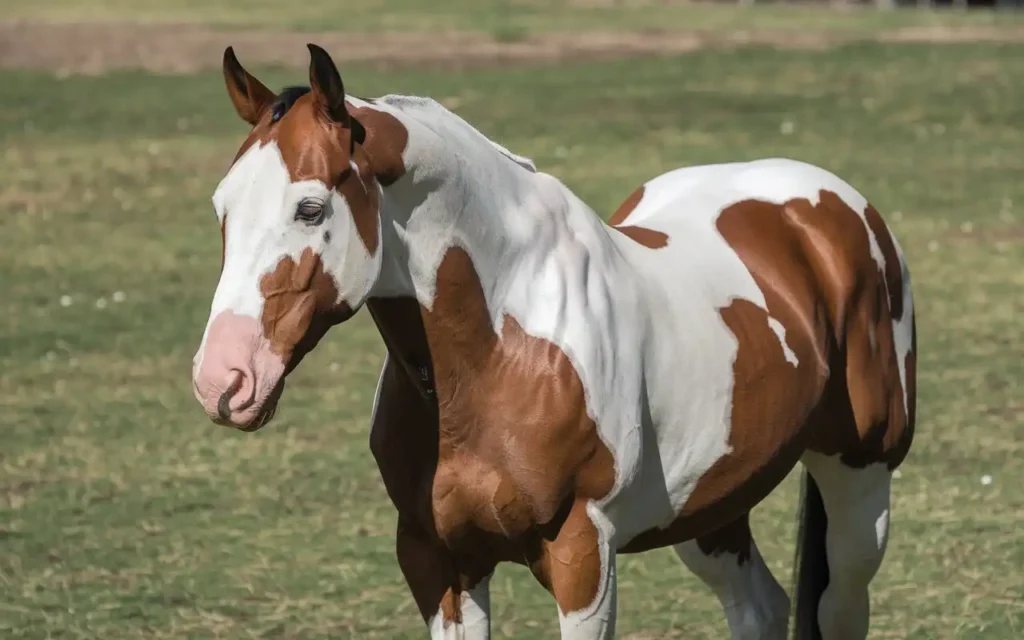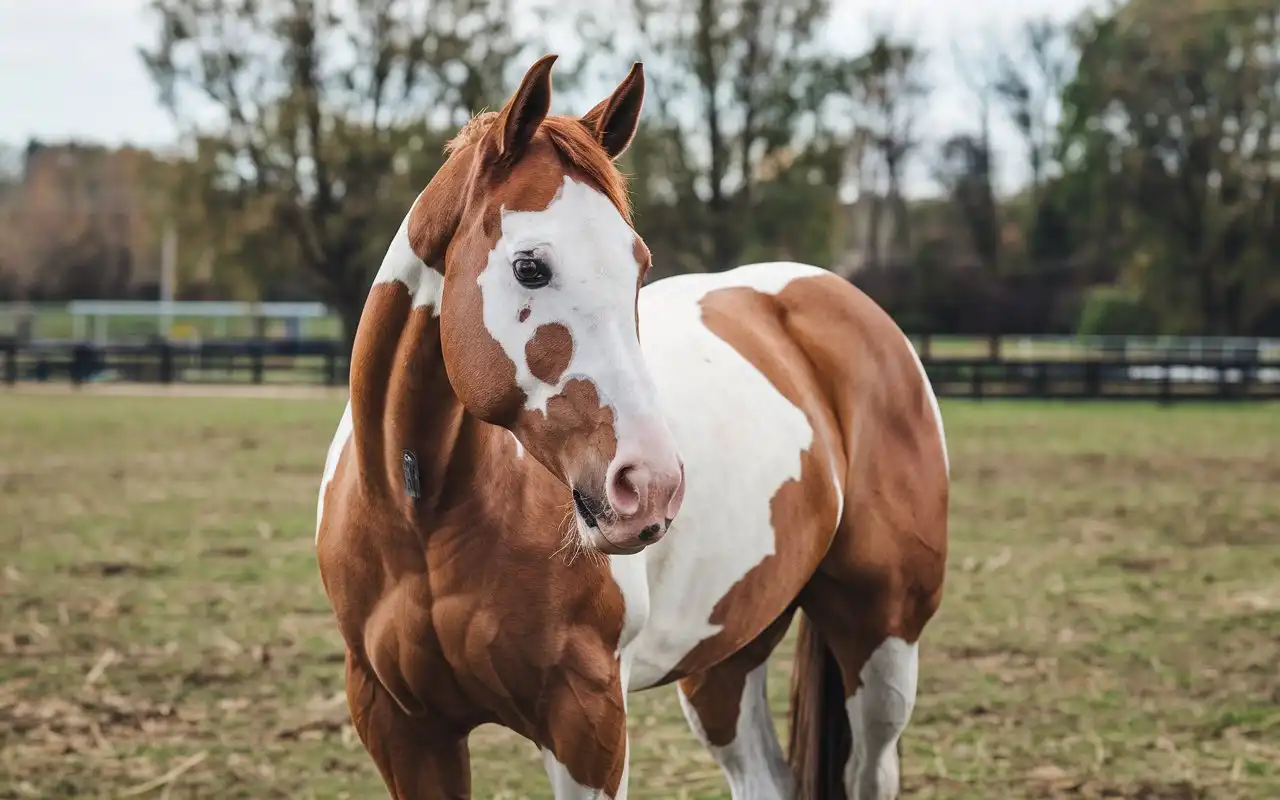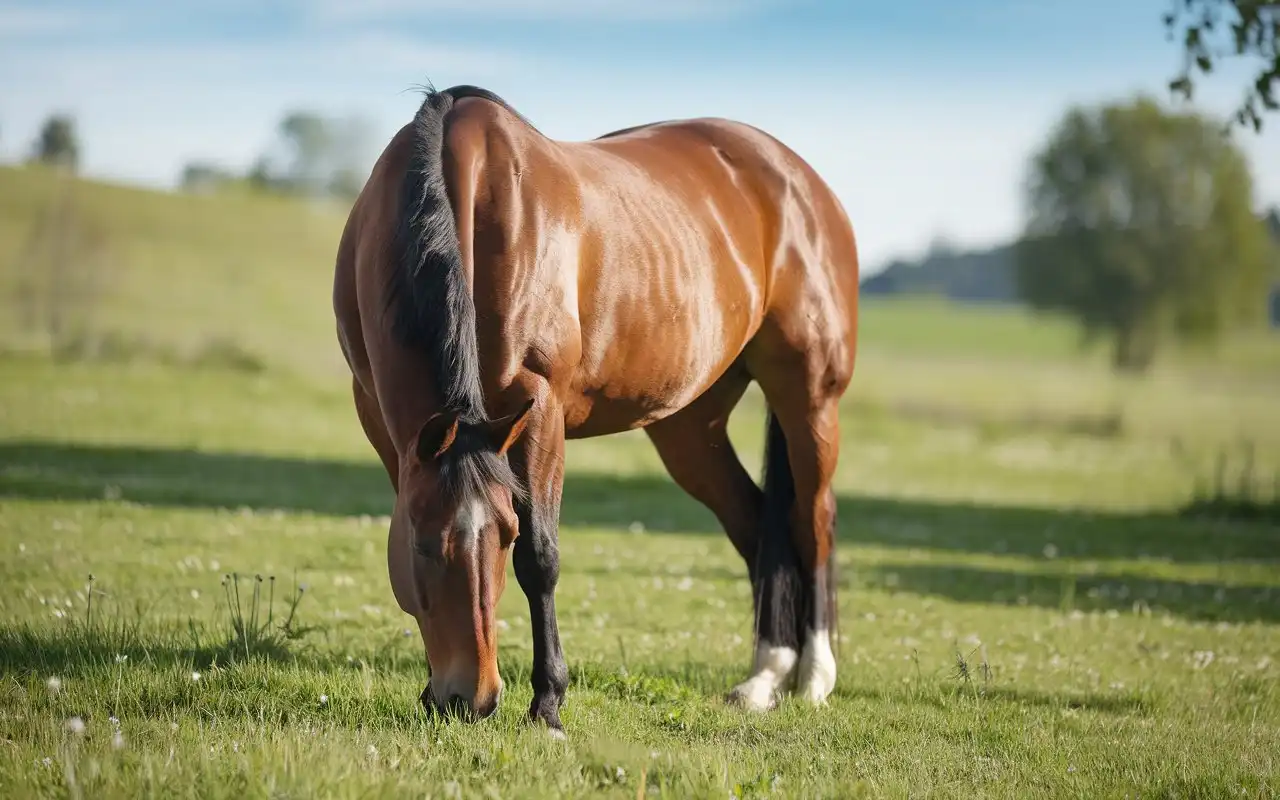Vitiligo in horses is a rare but notable condition. It causes a gradual loss of skin pigmentation. It causes white patches on a horse’s coat. This often worries owners. Vitiligo is not life-threatening. But it can affect a horse’s looks. In particular scenarios, it may produce discomfort or anxiety. It’s crucial to know about vitiligo in horses. This includes its causes, symptoms, and care tips. This will help ensure the well-being of affected horses.
Table of Contents
What is Vitiligo in Horses?
Vitiligo in horses is a condition. It causes patches of skin to lose their pigment. This results in lighter or white spots that contrast with the surrounding skin. These patches often appear in areas such as the muzzle, around the eyes, and along the body. Vitiligo is an autoimmune disorder. The immune system attacks the melanin-producing cells. Melanin colors the skin.
Unlike other skin conditions that can cause hair loss or rashes, vitiligo affects pigmentation. It does not usually cause pain or irritation in horses. Vitiligo is more common in humans and some dog breeds. It can, however, be found in horses, especially those with lighter coats.

Causes of Vitiligo in Horses
The cause of vitiligo in horses is still a bit of a mystery. Several factors may contribute to its development. Here are the most commonly suspected causes:
- Genetic Factors: Vitiligo may have a genetic component. Some horse breeds are more prone to it. Horses with lighter coats, like those with white markings or Appaloosa patterns, may be more prone to vitiligo due to their genes.
- Environmental Triggers: Stress, environmental changes, and some chemicals may trigger vitiligo in horses. Excessive sun exposure or sudden changes in diet or climate may cause this condition.
- Autoimmune Disorders: Vitiligo is an autoimmune disorder. The horse’s immune system attacks its own melanocytes. These are the units that provide skin its color. This immune response leads to depigmentation of the skin in affected areas.
Symptoms of Vitiligo in Horses
The most prominent symptom of vitiligo in horses is the development of white or lighter-colored patches on the horse’s skin. These patches typically appear around the eyes, muzzle, and on the body, but they can occur anywhere. The skin around the patches may appear normal, and in most cases, there is no associated irritation, swelling, or itching.
- Visible Signs: The horse will develop distinct patches of depigmented skin, which may expand over time. These patches are usually symmetrical. They can vary in size, shape, and location.
- Skin Changes: The depigmented patches do not harm the horse. But, they can make areas more sensitive to the sun. This may lead to sunburn if they are not protected.
- Other Symptoms: Most horses with vitiligo do not show any other symptoms beyond the depigmentation. However, some horses may exhibit behavioral changes due to the cosmetic nature of the condition.
Diagnosis of Vitiligo in Horses
A proper diagnosis of vitiligo in horses requires a thorough veterinary examination. The vet will usually do a physical exam. They may use tests to rule out other causes for the depigmented patches, such as fungal infections or skin disorders.
- Veterinary Examination: The vet will check the horse’s coat and skin for signs of depigmentation and any other skin issues.
- Tests and Screenings: In some cases, blood tests, biopsies, or skin scrapings may be needed. They can confirm the diagnosis and rule out other conditions, like fungal infections or autoimmune diseases.
- Differential Diagnosis: The vet may also want to rule out other conditions. Skin cancer and hormone imbalances can cause similar symptoms.
Is Vitiligo in Horses Contagious?
A common myth is that vitiligo in horses is contagious. However, vitiligo is not a contagious condition. It is an autoimmune disorder, meaning it results from the horse’s own immune system attacking its melanocytes. Therefore, there is no risk of transmission to other horses or animals.
Treatment Options for Vitiligo in Horses
Presently, there is no antidote for vitiligo in horses. However, there are several ways to manage the condition and minimize the impact on the horse’s quality of life:
- Managing the Condition with Medication: Sometimes, doctors may prescribe corticosteroids. They can help manage the immune response and slow the progression of vitiligo.
- Topical Treatments for Skin Care: Topical creams or ointments designed to protect the skin from sunburn can be beneficial. These treatments can also help soothe any irritation that may occur on the depigmented patches.
- Use of Supplements and Diet: Supplements for immune health and skin regrowth may help the horse’s skin. Vitamins such as vitamin E, zinc, and omega-3 fatty acids can aid in skin health.
Care Tips for Horses with Vitiligo
Caring for a horse with vitiligo involves protecting the affected skin and ensuring the horse’s overall health and comfort.
- Protecting the Horse’s Skin from Sun Damage: Depigmented skin is more prone to sunburn. Consequently, refrain from sun exposure, particularly during busy hours. Providing shade or using sun-protective gear can help reduce the risk.
- Proper Grooming and Hygiene: Regular grooming is important to keep the horse’s coat and skin healthy. Be sure to use gentle, non-irritating grooming products that won’t cause damage to the depigmented areas.
- Monitoring for Complications: Keep a close eye on the horse’s skin for any signs of irritation or infection. If you notice any changes, consult a vet promptly.

Living with Vitiligo in Horses
Vitiligo in horses is not life-threatening. But it can affect their appearance and possibly their emotions. Horse owners should be prepared to manage the condition for the long term and ensure their horses are comfortable and well-cared for. Some horses may stress over the depigmented patches. But, with care, most can live normal, fulfilling lives.
Preventing Vitiligo in Horses
Currently, no methods can prevent vitiligo in horses. The condition is often genetic or environmentally influenced. However, prompt identification and appropriate care can significantly reduce the impact of vitiligo. Early intervention is vital. It helps manage the condition. It can reduce its effects and prevent complications. Owners can improve their horses’ lives by watching for vitiligo. They should also provide quick vet support if needed. Awareness and proactive management are key to addressing this skin condition in horses.
Myths and Facts About Vitiligo in Horses
Vitiligo in horses has been surrounded by various myths and misconceptions over the years. Knowing the truth about this condition can ease horse owners’ anxiety. It will help them feel more informed about caring for their animals.
- Myth: Vitiligo is a sign of aging in horses.
- Fact: Vitiligo may seem linked to aging, but it is not. The condition is not tied to the horse’s age. Vitiligo is an autoimmune disorder. Its development is more linked to genetics and the environment than to aging. Some horses may develop vitiligo at a young age, even in their prime.
- Myth: Vitiligo does not cause pain or discomfort in horses.
- Fact: Vitiligo in horses does not cause pain. The main issue is a cosmetic change in the horse’s coat due to depigmentation. The lighter skin patches are usually not irritated or painful. But, they may become more sensitive to sunlight.
- Myth: Horses with vitiligo cannot perform or take part in shows.
- Fact: A horse with vitiligo can compete in equestrian events. There is no medical reason to prevent it. Vitiligo does not affect the horse’s physical capabilities. Owners should protect the affected skin from the sun and irritants. This will avoid complications during performance.
- Myth: Vitiligo is contagious to other animals or to horses.
- Fact: Vitiligo is not contagious. It is an autoimmune condition. It occurs when the horse’s immune system attacks its own pigment cells. There is no risk of transmitting vitiligo to other horses or animals through contact.
- Myth: There is no way to treat vitiligo in horses.
- Fact: There is no cure for vitiligo. But, there are ways to manage it and improve the horse’s quality of life. To help horses with vitiligo, use sun protection, diets, and meds to manage their immune response. These options can maintain their well-being.
Conclusion
Vitiligo in horses is a rare condition that demands careful attention from owners. Recognizing its causes and symptoms is essential for effective management. Horse owners can help affected horses by using suitable strategies. They will maintain the animals’ health and comfort. With proper care, horses with vitiligo can enjoy fulfilling and normal lives. Understanding the condition helps owners bond with their horses. It promotes a supportive environment. Owners should stay informed and consult veterinarians when necessary to ensure the best outcomes. A proactive approach can greatly improve the well-being of horses with this condition.







Pingback: Understanding Pigeon Fever in Horses: A Complete Guide